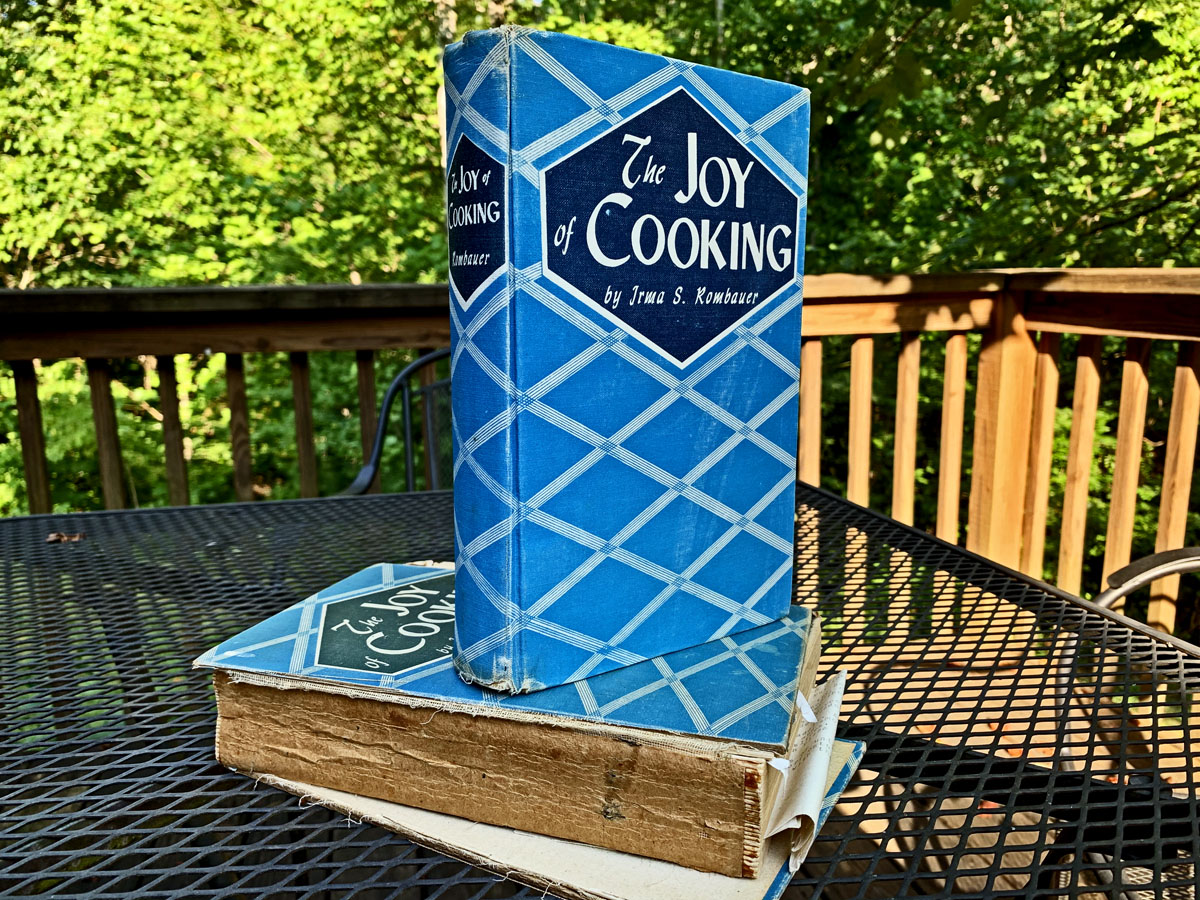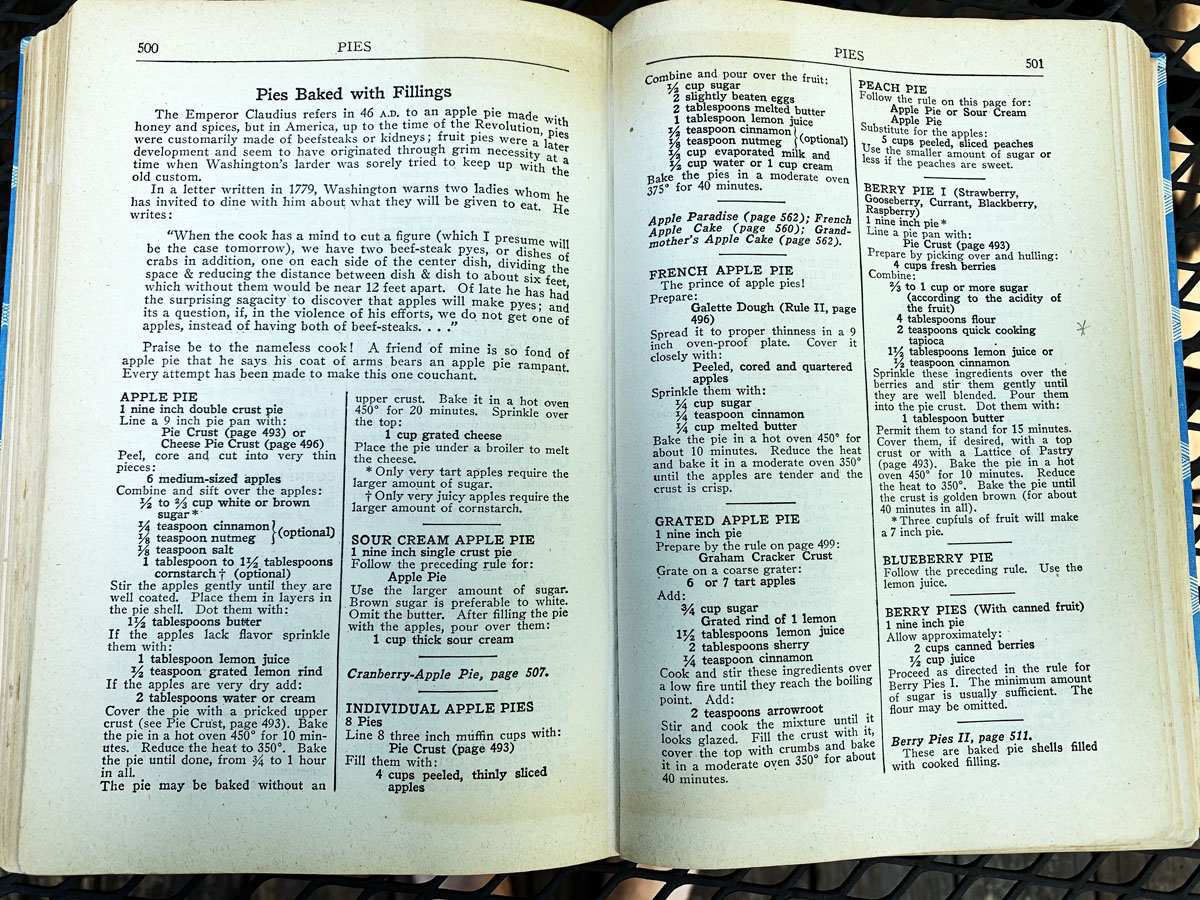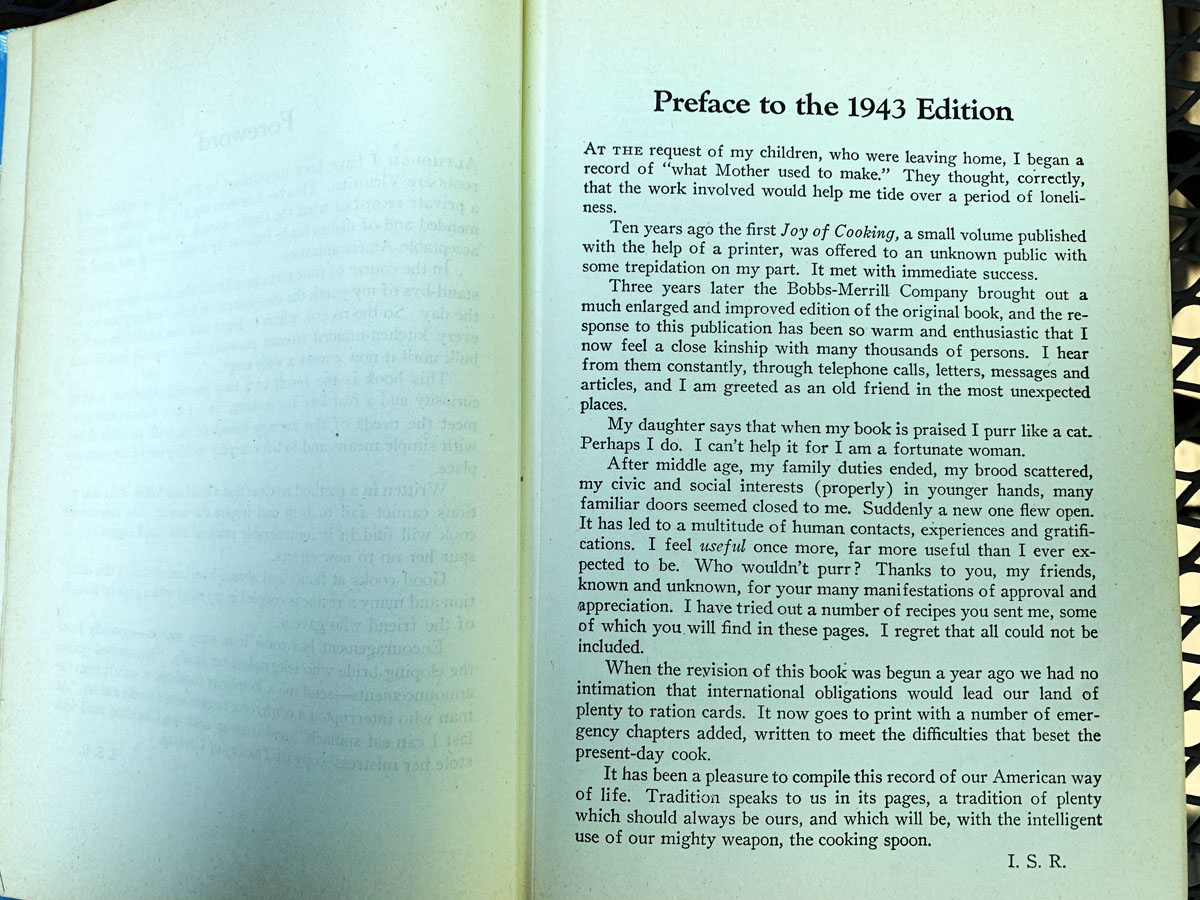
It was 1976, I believe, when I bought a copy of the 1943 edition of Irma Rombauer’s The Joy of Cooking at a junk shop. I am not hard on books, so I’m sure that the book was in fairly rough condition when I bought it. Over the years, though, the fabric peeled off the spine, and the covers came loose. Recently I found another copy of the 1943 edition on eBay and bought it for $28.
Why the 1943 edition? The 1943 edition is the wartime edition, which emphasized frugality and cooking from scratch. There have been many editions of The Joy of Cooking (see the Wikipedia article). According to Wikipedia, the 1936 edition emphasized meals that could be made in 30 minutes or less, using frozen and canned foods (yuck). The 1951 edition sounds interesting, though I have never seen a copy. Later editions, as far as I’m concerned, are probably poor references for truly traditional home cooking in America, which is what this book is good for.
In the 2009 film “Julie & Julia,” there is a funny scene in which Julia Child (played by Meryl Streep) encounters Irma Rombauer in a publisher’s office. Rombauer is presented as dowdy and a bit of a hick. Compared with Julia Child, no doubt she was. But, in my opinion, though learning to cook other nations’ cuisines competently is a skill greatly to be desired, there is no shame in honoring, loving, and preserving one’s native cuisine. The 1943 edition of The Joy of Cooking is the best reference I have ever seen for traditional American cooking.
I rarely follow any recipe exactly. But I do consult many, many recipes, just to get a concept before making my own version. My modifications are usually about making things healthier, with a bias toward California cuisine and Mediterranean cuisine. Though just about every recipe in The Joy of Cooking 1943 is made from scratch, she does use pantry staples that we all still use — tinned tomatoes, tinned salmon, and cracker crumbs, for example. (I don’t keep crackers in the house because I like them too much, but I recently bought some Ritz crackers — for the first time in my life, as far as I can recall — to make a traditional squash casserole.)
Part of the value of The Joy of Cooking 1943 is its completeness. You’ll find a reference for just about everything your grandmother (or great-grandmother) used to make. I was shocked a few months ago, though, when I discovered that there is no recipe for pimento cheese, which is an American classic.



Hi, David! I still use my mother’s 1951 “Irma,” as we called it, covered in bubble wrap and duct tape in a lame attempt to keep the whole thing together!
Hi Amy!: I was thinking that the 1951 must be a good edition. I may see if I can find one on eBay…